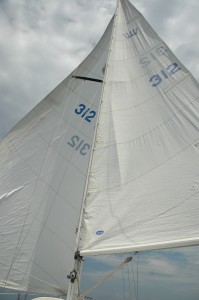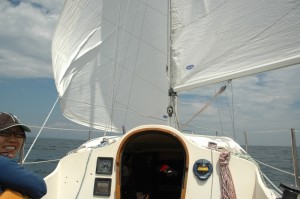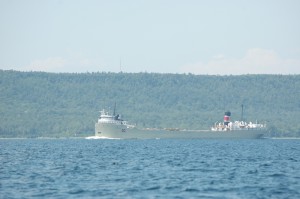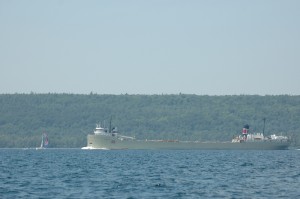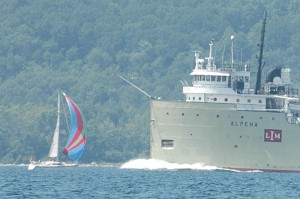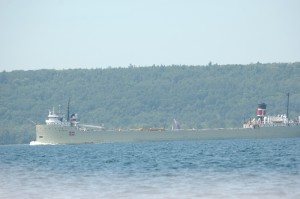Sailing to Killarney was a breeze. Our course was ever-so-slightly to the northeast and the wind was beautifully out of the southwest. Once we cleared the lee of Club Island, the engine was off and sails were up at a perfect 130 degrees of apparent wind. We blasted away, at over 5 knots under sail alone.
At one point, we had to sail deep – close to 180 degrees – and (although slightly unsafe) decided to sail wing & wing. Yes, I know better than to do so without a boom preventer but I was steering a careful course and only went by the lee for a short time to open up the genoa. There’s something ‘just right’ about sailing wing & wing… even if it is somewhat inefficient.
We only saw one sailboat and one freighter all day; We all happened to meet at the same time and in the same space!
To put the above two photos into perspective, realize that the sailboat is 30-40′ long and the mast is even taller. Take a look at this and consider the height of the bow wave and the sheer bulk of the lake freighter.
Fortunately, no harm came to him… you can see his mast just peaking over the side here.
That was our excitement for the day. The rest of the trip was gloriously uneventful and we arrived in Killarney with lots of time to spare. Wouldn’t you know it, but we ended up at the same marina as our friends on the Lyre. So far, that makes Goderich, Kincardine, Tobermory and now Killarney! I swear, we’re not stalking them.
